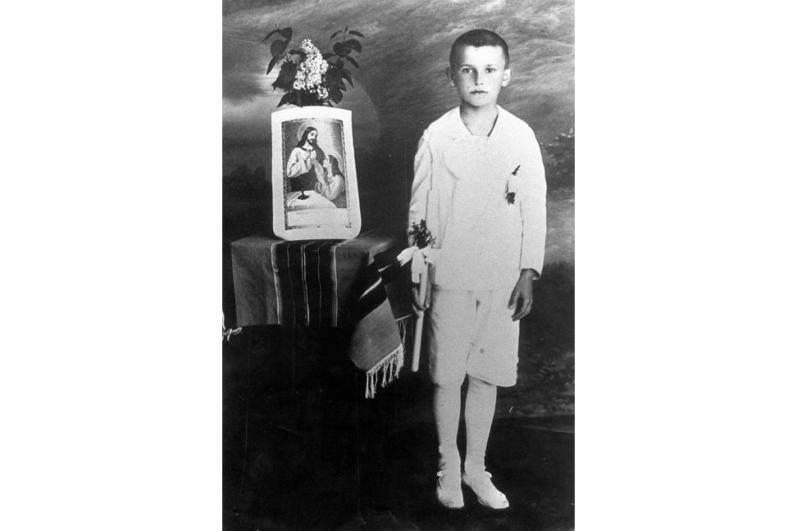Ordinary Times in St. John Paul II's hometown
As a member of the so-called "John Paul II generation," St. John Paul II was the first pope I really remember and the one who shaped my youth and young adulthood. I remember the way he confronted a broken world in the vigor of his youth -- the pope skied! -- and how he faced his very public suffering and death with the strong serenity of his old age.
This year, the April 2 anniversary of his death falls on Palm Sunday as Holy Week begins. It is hard for me to believe that it has already been 18 years since St. John Paul II's earthly life drew to a close. So, my thoughts turn to some days I spent in his Polish hometown of Wadowice. There, I saw the places sacred to his youth. These places may have seemed ordinary at the time, as so many of our own hometowns seem ordinary simply because they are so familiar. But, it was this small town that shaped the life of an extraordinary man.
I saw the small parish church where St. John Paul II was baptized and the baptismal font where, in his words, "it all began." I saw the town square where he played with his friends -- many of whom would soon have their lives stolen from them in the Nazi death camps or on the bloody battlefields that engulfed their young lives. I saw the programs from his high school drama productions and thought about how different the world would be if he had followed his early ambitions to be a poet or an actor.
I saw the sepia photographs of the whole Wojtyla family he loved and lost -- an older sister, Olga, whom he never knew; a beloved mother, Emilia, who died when he was only eight; an admired older brother, Edmund, who died as a physician caring for his patients; and his devoted father, Karol Sr., who died suddenly when young Karol was merely 20. Years before Karol Wojtyla was ordained a priest, his entire family had already passed from this life.
I saw the dining hall where his father took him to eat when the two lived alone. I saw the orphanage run by religious sisters who cared for him as a boy during the times when his father was traveling and could not do so.
In the interest of serious historic inquiry, I ate at more than one bakery that claimed to sell the very crÈme cakes the future pope enjoyed as a boy. In the interest of curiosity, I visited the museum devoted to his life.
Most poignant to me, I visited his very ordinary childhood home. In a small flat on the second floor of a modest building, was a simple bedroom he shared with his father, a tiny kitchen, and a neat sitting room. The sitting room was the nicest -- and it went unused after the shadow of Emilia's death fell on the home. In those few rooms, he grew up and came to know the God who would sustain him in the many sufferings of his youth and the blessed Mother who would comfort him in the trials of his life. It was there that he experienced what it is to live with fear and hope, with joy and sorrow, with great love and great loss.
This home was located just across an alley from the parish church where Karol and his father would go to Mass each morning. What caught my eye was a large sundial mounted on the side of the church -- a sundial now permanently marked with the precise time of St. John Paul II's death. Over the sundial was, and is, a Polish inscription that read, "Czas Ucieka Wiecznosc Czeka" or, "Time Flies, Eternity Waits." Because that inscription made an impression on me, I had to go to the gift shop and buy a picture of the sundial to keep in my office. It remains at my desk to this day.
"Time Flies, Eternity Waits." These were words that young Karol Wojtyla would have seen out of his window every single day. In those words lies an important truth by which to live. It is a reminder to do what is urgent, pressing, and necessary -- but not at the expense of those things and those people who are truly important because they point the way toward an eternity that lasts.
One of the most frequent replies I give to the question, "How are you?" is "Really busy!" For me, it is so easy to get caught up in the things of this world that keep life busy and make time fly. Perhaps what gave St. John Paul II the serenity, courage, and fortitude to live the life he did was knowing that, despite all that makes time fly here on earth, it is eternity that waits, and eternity that matters. It was a truth learned in his own hometown.
I would like to think that now, in the joy of eternity, St. John Paul II prays much and often for those of us still occupied with the busy-ness of life that makes time fly. I hope, too, that the same eternity waits for us when we, also, cross the "threshold of hope" and leave behind our ordinary times.



















